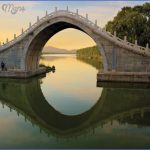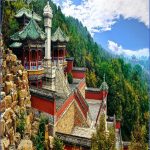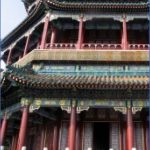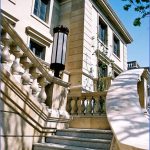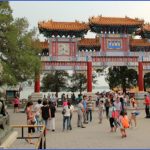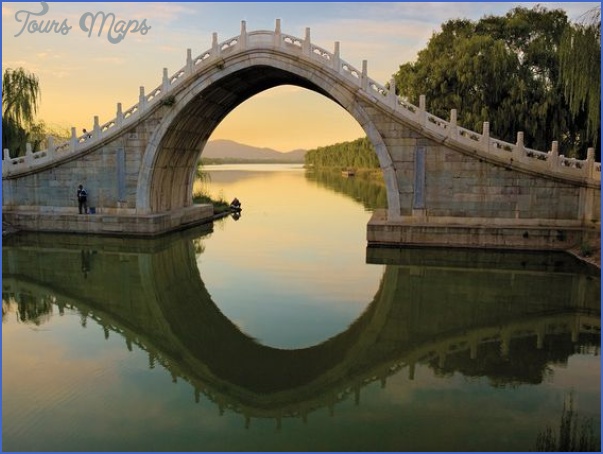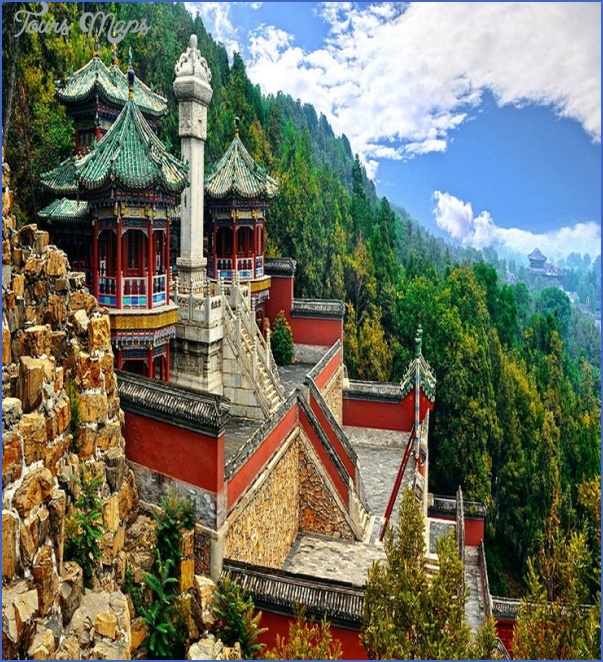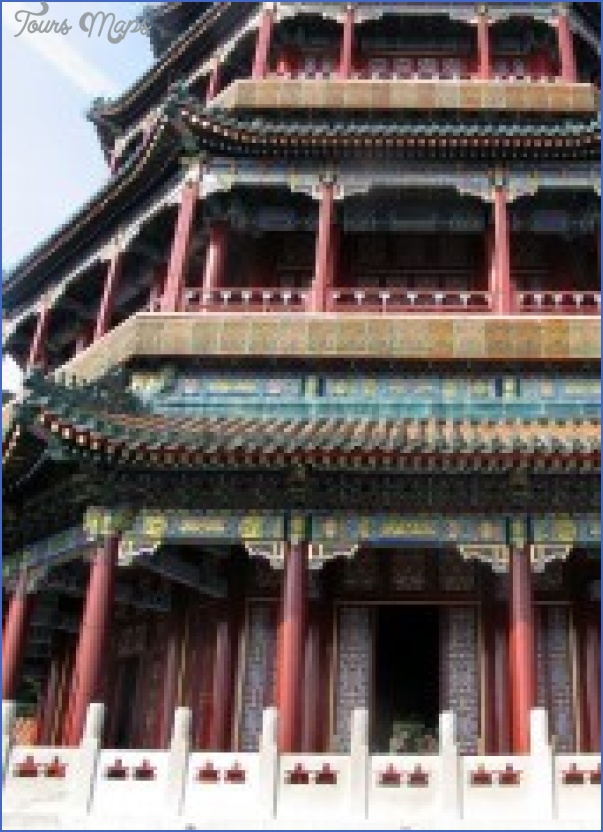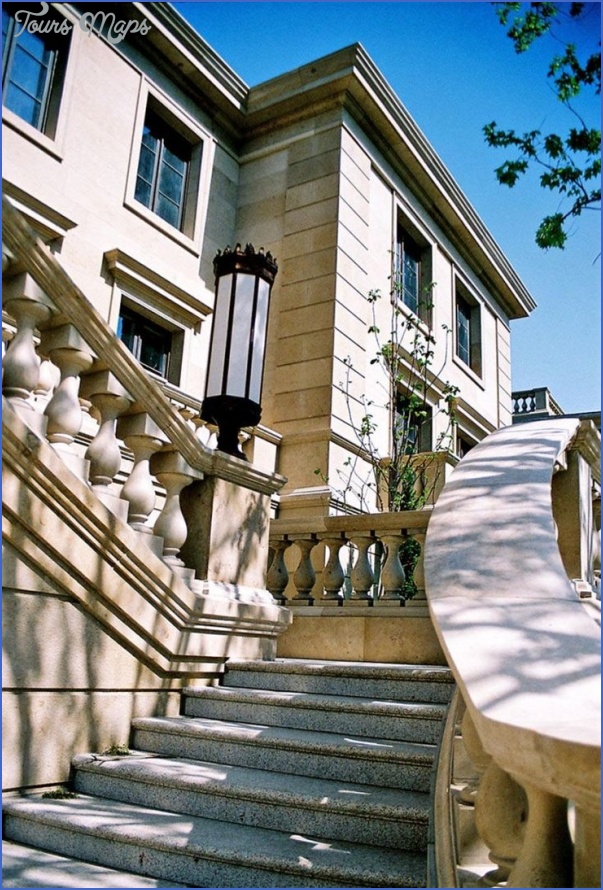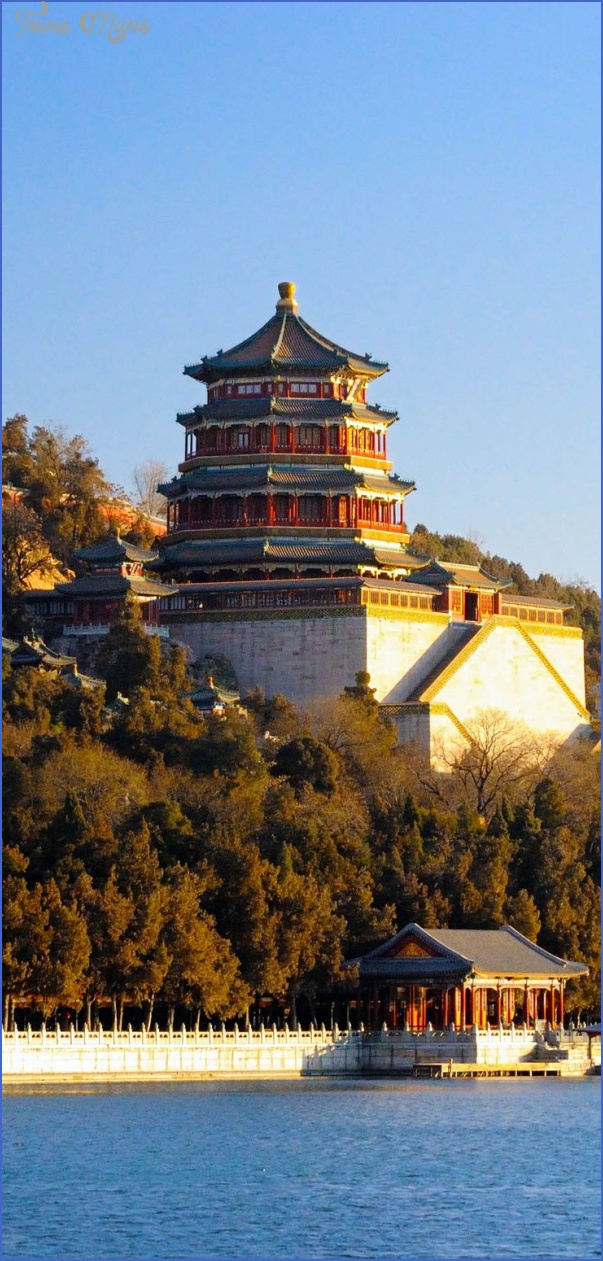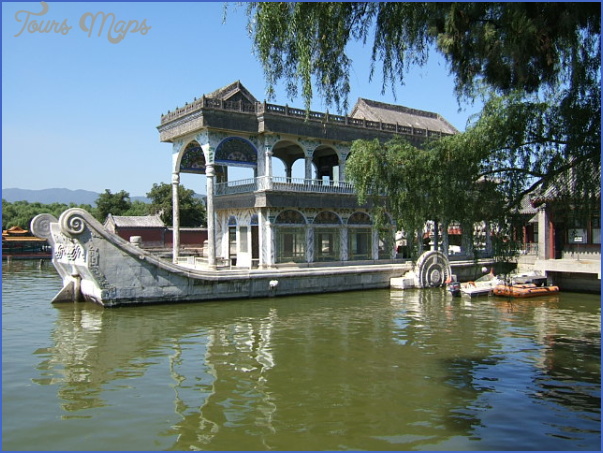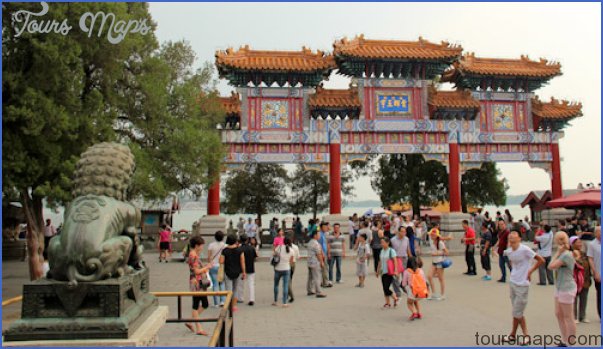The importance attributed to the roof as opposed to the subordinate role ofthe surrounding walls underlines how even Chinese architecture respects the duality of Yin and Yang, in this case the interior and exterior. The use of materials such as wood, glass and rice paper on the open sections serves to emphasise the secondary importance of the wall as merely a partition or protective panel.
Garden Within the context of the town the courtyard represents the interior but in relation to the summer palace it stands for something external or empty. The palace is similarly subject to the dualism inherent in every phenomenon. It is a closed, or more accurately a protected, space but at the same time externally orientated towards the garden. In contrast to a building and to a town where criteria such as symmetry and right angles are important, the Chinese garden is laid out asymmetrically, with the aim of imitating nature, using curved lines to give form to the immediate environment and the structural features such as bridges, small pavilions and covered galleries. Its design cannot be perceived as a whole, but must be considered one section at a time, like the mystery that embraces the natural world. Hence it advances a tiny section at a time, each section alluding to the next scene or leading into it, by copying a small part. Like traditional Chinese landscape paintings, these miniature vistas always consist of mountains and water or what the Chinese regard as the two main features in nature, landscape and the factors which influence it.
Literature
Historiography The existence of a written language with rules totally independent from the spoken language meant that literature and written culture were for very many years restricted to an exclusive segment of society and they became an instrument of power in the hands ofthe educated classes. The spread of Buddhism and missionary work based on an oral tradition led to the emergence of popular literature written in the vernacular language. Three principal literary categories can be established in Chinese cultural history: historical writings, poetry and the novel. Throughout the classical period, historical writing was an important literary genre. Writers not only sought to describe historical events objectively (natural catastrophes, loss of human life, eclipses of the sun and moon, conquests and peace accords), but also gave anecdotes from the lives of the people, little moral tales and the rites and traditions of earlier societies and eras.
“Historical Records” or “Shi Ji” was the outstanding example of this literary category. It was written by Sima Qian (145-86 B.C.), a historical writer who lived during the Han Dynasty and who set out to record the history of China from its beginnings up to his own lifetime. Sima Qian, who is often compared with Thucydides and Tacitus, compiled the facts and then interpreted them, giving sources and quoting long extracts from the texts that he had consulted. He also produced comparative tables with contemporary methods of compilation and analysis. Sima Qian’s work formed the basis for a series of official writings entitled “The History of 24 Dynasties” which were written by the archivists and officials at the imperial court. They describe the history of China from the Han period to the demise ofthe Ming Dynasty.
The significance and spread of these historical texts had an unfavourable effect on the epic tale. Given the unbridgeable gap between the written and spoken language, such narratives could only be passed on by word of mouth.
While historical writing is the predominant literary genre of classical antiquity, the Tang and Song Dynasties (7-13th c.) are renowned as the “Historical Records (“Shi Ji”)
Poetr golden age for Chinese poetry. The Chinese seem to excel at this form of self-expression. Poetry, surprisingly, serves as a catalyst, highlighting the differences and opposing elements within society and sharpening the individual and collective capacity for empathy. Poetry has always had a prominent part to play in the life ofthe Chinese people and continues to do so. It is read at public and private times, wars as well as weddings, and will be displayed inside people’s homes and in temples. It will be found on porcelain vases, the plinths of statues, the gable ends of pavilions, at the entrances to gardens and in shop windows. The poem will very often just be a verse, perhaps only two lines, but will inform, describe, comment, narrate or imagine.
The simple syntax of the Chinese language and, in contrast, the fullness of meaning within the symbols and words open up a wealth of opportunities for such devices as allusion, ambiguity, assonance, as well as for tricks with sound and sense, and range is further widened by the four levels of tone. In fact, the melody of the spoken language helps to overcome the cultural divide between the written and spoken language without allowing the written version to lose any of its value. Indeed, the reverse is often true as the different impact of the poem on the eye and the ear enhances its appeal.
Wooden dome in the Beijing Summer Palace Photo Gallery
Maybe You Like Them Too
- The Best Cities To Visit in The World
- World’s 10 Best Places To Visit
- Coolest Countries in the World to Visit
- Travel to Santorini, Greece
- Map of Barbados – Holiday in Barbados

